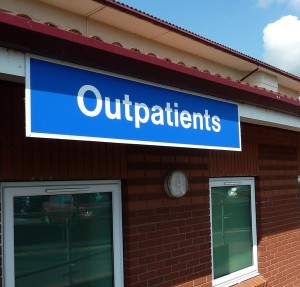Health and Wellbeing Boards differ in their levels of transparency, involvement and modes of operation
Health and Wellbeing Boards were introduced alongside the government’s structural reforms of the NHS, as new bodies aiming to bring together NHS commissioners, local government and others, and were expected to provide an important new forum for democratic input into the health service. Anna Coleman and Surindar Dhesi analyse the experience of Health and Wellbeing Boards so far, and find significant variations in practice, including in the inclusion of partner organisations, level of transparency and the role of elected councillors.

Andrew Lansley was the architect of the coalition government’s health reforms. Credit: AVoteForHealth09 (CC BY-SA 2.0)
A great deal rests on Health and Wellbeing Boards (HWBs), a new type of local partnership. These were established under the Health and Social Care Act 2012, to act as a forum in which leaders from the local health and care system could work together to improve the health and wellbeing of their local population and promote integrated services.
Last year, the House of Commons Communities and Local Government (CLG) Committee concluded that HWBs have a pivotal role and their success ‘is crucial to the new arrangements’. However, it also warned of the danger ‘that the initial optimism surrounding their establishment and first year or two in operation will falter and go the way of previous attempts at partnership working that failed and became no more than expensive talking shops’ (see paragraph 22). We examine these issues and the early development of HWBs in our recently published article in Local Government Studies and a forthcoming PhD Thesis.
While partnerships are seen to be a prerequisite for tackling ‘wicked issues’ (those issues so complex that their solution lies with a multi-agency response), historically they seem unable to break free from the ‘silo-based’ structures which govern how many UK public services are organised and delivered.
The official vision for HWBs from the Department of Health emphasises: Joint local leadership between Clinical Commissioning Groups (CCGs) and local authorities (LAs); key roles for elected councillors, clinicians, and directors of public health, adults and children’s services; the enablement of greater local democratic legitimacy of commissioning decisions, and provision for opportunities for challenge, discussion, and the involvement of local representatives (see page 15). However, HWBs have no formal powers, and their ability to influence others will depend upon their success in building relationships.
Established as sub-committees of local authorities, the exact membership of HWBs is not formally mandated, and locally HWBs can choose how they wish to work. It is clear that the policy of localism; the absence of central directives (with the exception of a statutory minimum membership list (see Box 1 below) and the need to produce guidance (on Joint Strategic Health Needs Assessments and Joint Health and Wellbeing Strategies) and local establishment of HWBs, has led to the development of a variety of HWBs with considerable variation in membership, sub-structures, meeting frequencies, practices and intentions.
Box 1: Stipulated membership of HWBs
Each Board is to have the following members as a minimum:
- at least one elected local authority councillor,
- the director of adult social services for the local authority,
- the director of children’s services for the local authority,
- the director of Public Health for the local authority,
- a representative of the local Healthwatch organisation for the area of the LA,
- a representative of each relevant CCG,
- and such other persons, or representatives of such other persons, as the local authority thinks appropriate.
HWBs are encouraged to work with a wide range of local and national stakeholders, including local authority departments, voluntary and community providers, NHS provider trusts (e.g. hospitals), crime and safety, Public Health England, as well as with their local population (patients and the public). Some HWBs have retained a small membership, based primarily on the statutory list; whilst others have included interested parties such as district and borough councils (in two-tier local government areas), providers, the police and the voluntary sector. In some places attention has been given to maintaining a balance between LA and health service members and there are instances of opposition elected members being invited to be HWB members, although this was the exception.
Many GPs/NHS managers have little or no previous experience of working with elected councillors and there is some concern that the strategic direction of the LA and its committees (including the HWB) could change if the council changes its political constitution and concerns were expressed regarding election periods when council business has to be put on hold. However, those with some experience of working with LAs (for example, around health scrutiny) were more sanguine, having had experience of working with interested and experienced local councillors.
The level of debate seen in public appears to be mixed, some HWBs actively ‘tweet’ their discussion and have live web streaming, whilst others have a clear policy of debating contentious issues away from the public gaze. This latter approach has some interesting implications for the idea of HWBs adding democracy to the health service, as residents would find it difficult to assess the contribution of their elected members to debate and decision making on their behalf.
Recent research by Humphries and Galea has suggested several features of HWBs which could potentially set them apart from previous partnership initiatives. These include: involvement and engagement of GPs; better governance and accountability (due to being sub-committee of the LA); encouragement of wider relations between the NHS and broader LA (not just Social Services); and opportunities afforded by the move of Public Health functions to local government. However similar initiatives have historically fallen short of initial expectations.
In the complex new system, resulting from the many changes under the Health and Social Care Act 2012, and characterised by potential fragmentation and confused accountability (see our other recently published paper from research with Clinical Commissioning Groups), HWBs are the one element within the new system with a specific mandate to encourage integration between local bodies. This has led to potentially unrealistic expectations that they can solve longstanding and intractable problems, such as joined up working between health and social care – as Richard Vize has discussed in the Guardian – but also provides opportunities for them to work differently and make a difference locally to the health and wellbeing of local populations.
The system needs time to find its feet but already there is talk from Labour that should they get back into power in 2015, they would effectively switch the role of CCGs and HWBs, combining NHS and social care budgets with HWBs controlling decisions and CCGs taking an advisory role. Additionally, Public Finance reported recently that the Health Select Committee has suggested local HWBs be given responsibility to commission joined up health and care services, important in the light of the Better Care Fund (June 2013 spending round) where health and care budgets are currently being pooled (£3.8bn) based on plans agreed between the NHS and LAs. If these changes do materialise, the policy landscape could change significantly once again. Watch this space.
—
Note: A shortened version of this post originally appeared on the INLOGOV Blog in January 2014. It represents the views of the authors and does not give the position of Democratic Audit or the LSE.
The research for both of the authors’ referenced papers is funded by the Department of Health. The views expressed are those of the researchers and not necessarily those of the Department of Health.
Please read our comments policy before commenting. Shortlink for this post: buff.ly/Oto5hG
—
 |
Anna Coleman is a Research Fellow and Surindar Dhesi a PhD student in the HiPPO team (Health policy, politics and organisation group), part of the Institute for Population Studies at the University of Manchester.HiPPO also constitutes, jointly with researchers from The London School of Hygiene and Tropical Medicine and the University of Kent, the Department of Health Policy Research Unit in Commissioning and the Healthcare System (PRUComm). PRUComm provides evidence to the Department of Health to inform the development of policy on all aspects of health-related commissioning. |
 |






 Democratic Audit's core funding is provided by the Joseph Rowntree Charitable Trust. Additional funding is provided by the London School of Economics.
Democratic Audit's core funding is provided by the Joseph Rowntree Charitable Trust. Additional funding is provided by the London School of Economics.
sac de voyage burberry
There is certainly a great deal to know about this subject. I love all the points you’ve made.|
锘縮ac burberry cuir
I truly love your website.. Great colors & theme. Did you make this web site yourself? Please reply back as I’m hoping to create my own website and want to find out where you got this from or just what the theme is called. Many thanks!|
air max 90 pas cher
Thank you for the auspicious writeup. It in fact was a amusement account it. Look advanced to far added agreeable from you! However, how can we communicate?|
Latest from HiPPO: Health & Wellbeing Boards differ in their levels of transparency, involvement & modes of operation https://t.co/qFJDcYnawN
Two great posts today on DA on Health and Wellbeing Boards https://t.co/rC5oJRFJ9y & electoral turnout https://t.co/Q0Q7en2RMG
Here’s a blog from Anna and Coleman and me on Health and Wellbeing Boards via @democraticaudit https://t.co/7sSCuGGrYu
Health and Wellbeing Boards differ in their levels of transparency, involvement and modes of operation https://t.co/nlxkPxnCHV
Health and Wellbeing Boards differ in their levels of transparency, involvement and modes of operation https://t.co/3IU4H8didy